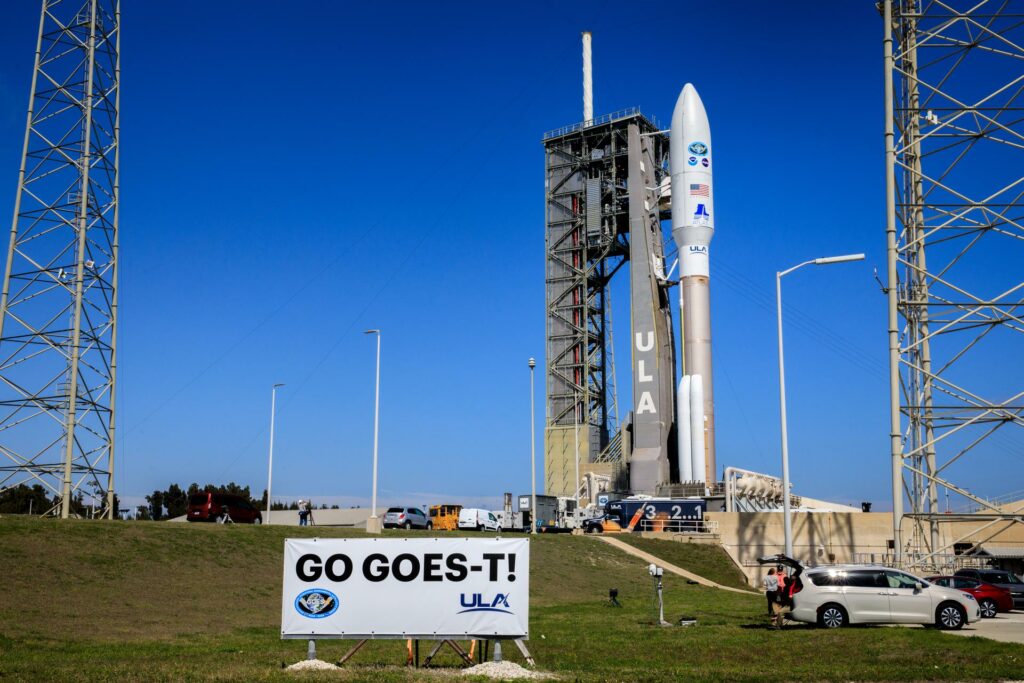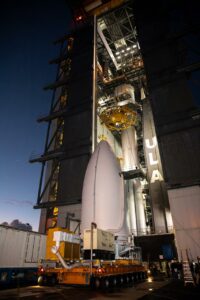
Here are some fun facts you may not know about National Oceanic and Atmospheric Administration’s (NOAA) Geostationary Operational Environmental Satellite-T (GOES-T) satellite and GOES-R Series missions:
- NOAA’s GOES-T is the third satellite in the Geostationary Operational Environmental Satellites (GOES) – R Series, the Western Hemisphere’s most sophisticated weather observing and environmental monitoring system.
- After GOES-T launches, it will be renamed GOES-18 once it reaches geostationary orbit. Following a successful on-orbit checkout of its instruments and systems, NOAA plans to put GOES-T immediately into operational service, replacing GOES-17 as GOES West.
- GOES-18 will work in tandem with GOES-16, NOAA’s operational GOES East satellite. Together, GOES-16 and GOES-18 will watch over more than half the globe – from the west coast of Africa to New Zealand. GOES-17 will become an on-orbit spare.
- The Advanced Baseline Imager (ABI) is the primary instrument on the GOES-R Series for imaging Earth’s weather, oceans, and environment. ABI is used for a wide range of applications related to severe weather, hurricanes, aviation, natural hazards, the atmosphere, oceans, and cryosphere. ABI scans Earth five times faster with four times the resolution and three times the number of channels than previous GOES for more accurate and reliable forecasts and severe weather warnings.
- GOES-R satellites carry the Geostationary Lightning Mapper (GLM), the first instrument of its kind flown in geostationary orbit. Developing severe storms often exhibit a significant increase in lightning activity and GLM data can help forecasters focus on initial thunderstorm development and intensifying severe storms before they produce damaging winds, hail or even tornadoes.
- GOES-R satellites host a suite of instruments that detect and monitor approaching space weather hazards. The Solar Ultraviolet Imager (SUVI) and Extreme Ultraviolet and X-ray Irradiance Sensors (EXIS) provide imaging of the Sun and detection of solar flares. The Space Environment In-Situ Suite (SEISS) and Magnetometer monitor, respectively, energetic particles and the magnetic field variations that are associated with space weather. Together, observations from these instruments contribute to space weather forecasts and early warning of disruptions to power utilities and communication and navigation systems as well as radiation damage to orbiting satellites.
- GOES-T will provide the same observations that GOES-R (GOES-16) and GOES-S (GOES-17) do, but with slight modifications to two of the instruments.
- Changes were made to the design of the ABI radiator and loop heat pipes for GOES-T to decrease the chance of future cooling system malfunctions. The new design uses a simpler hardware configuration, which eliminates the filters that are susceptible to debris. GOES-T also carries an upgraded magnetometer instrument. The new magnetometer is expected to provide improved performance for measuring magnetic field variations.










